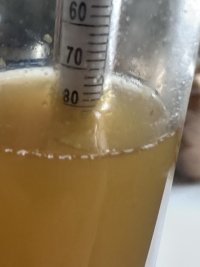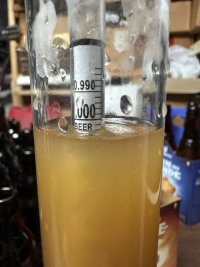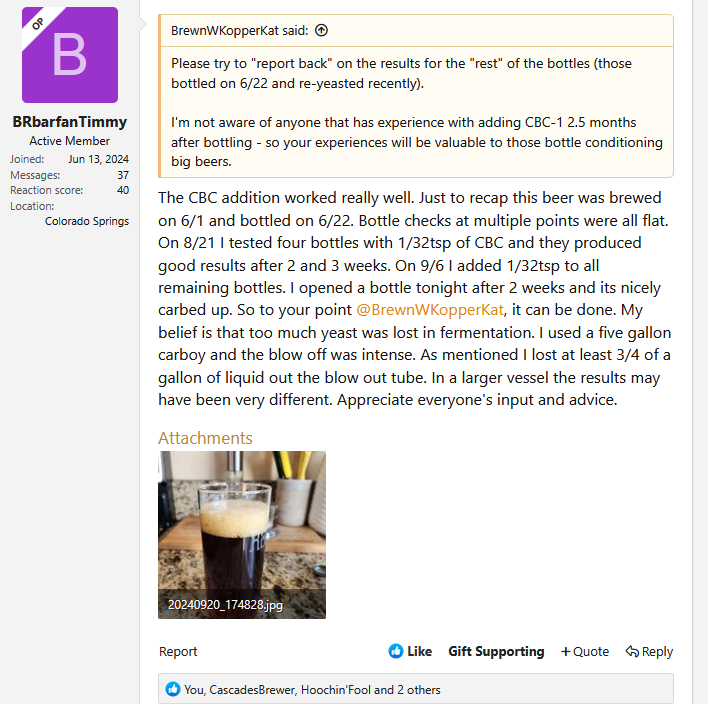_Keven
Well-Known Member
- Joined
- Nov 17, 2023
- Messages
- 56
- Reaction score
- 21
Hello, this is the 2nd time I’ve used this yeast and the first time I had the infamous stall and pitched 3711 to finish it off. This time around I’m aiming to finish completely with 3724
Note: I used 7.5 lbs pilsen DME, and 1.25 lbs dextrose)
OG: 1.072
Pitched 2 packs (made a starter 24 hours before)
I read this forum post:
https://forum.homebrewersassociation.org/t/wyeast-3724-fermentation-temperatures/19140/3
They talk about pitching in the low 80s being a tried and true way of getting a faster more attenuated beer so I did exactly that.
I pitched in the mid 60s and after about 8 hours cranked the temp up to 80 which in hindsight might’ve been a bit abrupt. The next day it was churning and bubbling every few seconds. The second day it was bubbling every 30 seconds or so, so I bumped the temp up to 82. Today it bubbles maybe every minute or so. I’m only on day three but I’m concerned this slow down is inevitably going to lead to the stall.
My question is should I keep ramping up temps a few degrees a day until I get to 90? Also should I take out my airlock and place some foil over it, so the yeast isn’t stressed from all the pressure? I know this strain can stall when it’s pressured too much. Will open fermenting this actually help at this point?
Note: I used 7.5 lbs pilsen DME, and 1.25 lbs dextrose)
OG: 1.072
Pitched 2 packs (made a starter 24 hours before)
I read this forum post:
https://forum.homebrewersassociation.org/t/wyeast-3724-fermentation-temperatures/19140/3
They talk about pitching in the low 80s being a tried and true way of getting a faster more attenuated beer so I did exactly that.
I pitched in the mid 60s and after about 8 hours cranked the temp up to 80 which in hindsight might’ve been a bit abrupt. The next day it was churning and bubbling every few seconds. The second day it was bubbling every 30 seconds or so, so I bumped the temp up to 82. Today it bubbles maybe every minute or so. I’m only on day three but I’m concerned this slow down is inevitably going to lead to the stall.
My question is should I keep ramping up temps a few degrees a day until I get to 90? Also should I take out my airlock and place some foil over it, so the yeast isn’t stressed from all the pressure? I know this strain can stall when it’s pressured too much. Will open fermenting this actually help at this point?
Last edited:




























![Craft A Brew - Safale BE-256 Yeast - Fermentis - Belgian Ale Dry Yeast - For Belgian & Strong Ales - Ingredients for Home Brewing - Beer Making Supplies - [3 Pack]](https://m.media-amazon.com/images/I/51bcKEwQmWL._SL500_.jpg)































